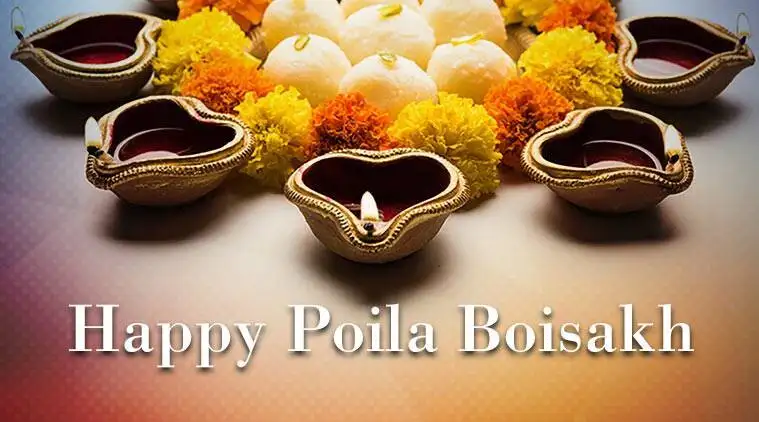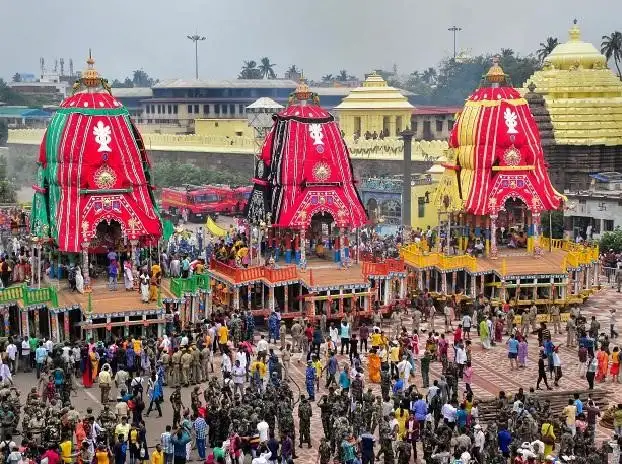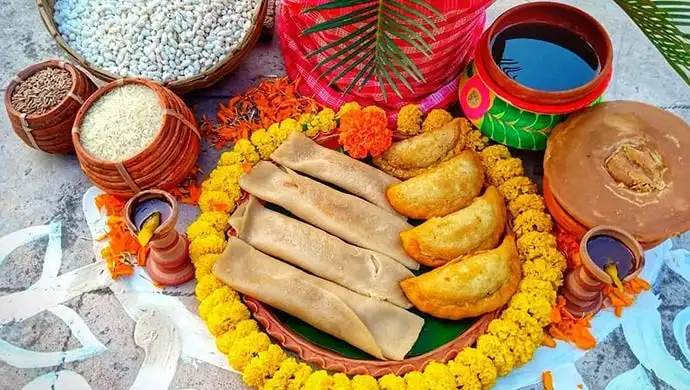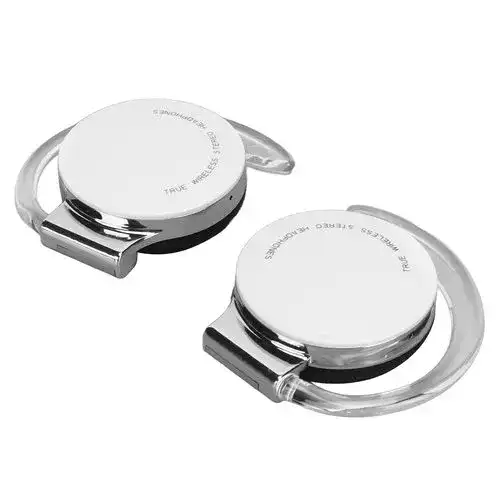Festivals are a tool for setting life to a state of cheerfulness and enthusiasm. Without them, life would become an endless series of mundane Wednesdays. The Babu and Moshai of Bangla know how to create an environment of energy, devotion, and rejuvenation. The incredible state has a lot more to offer beyond the ancient history and mesmerizing culture.
As natives of Bengal said, “Baaro Maash E Tero Parbon” which means thirteen festivals in twelve months, life in West Bengal is full of enthusiasm and excitement throughout the year.
Since the list is longer than 13, we have handpicked a few unique festivals celebrated in West Bengal. Let’s check these festivals.
Durga Puja is the most famous festival of West Bengal that is celebrated with great joy. Durga Puja is a festival deeply related to West Bengal. It is also known as Durga Pujo, Akalbodhan, Sharadiya Pujo, Maha Pujo, and Mayer Pujo. This festival is marked by the arrival of Goddess Durga on Earth along with her family, which includes Lord Shiva, Lord Ganesha, Goddess Saraswati, and Lord Kartikeya.
Starting with Mahalaya, followed by Shasthi, Saptami, Ashtami, Navami, and Dashmi, Durga Puja is a complex affair of 10 days, with the last five days being the most famous.
What is the Reason to Celebrate Durga Puja – It is believed that Goddess Durga arrived on earth to destroy the Mahishasura, who was a demon king with the power of immortality and the head of buffalo. Shakti, the ultimate female power, took the form of Goddess Durga and killed him after 15 days of fierce war with him. On the last day of the festival, i.e. 10th day the Goddess emerged victorious against Mahishasura.
When it is celebrated – This festival is celebrated in October or November.
How it is celebrated – The day is marked by many rituals and ends with sindoor khela followed by the march of clay sculpture idols that are later immersed in the river. It is believed that on this day Durga returns to Shiva and therefore it is considered an auspicious day for married women who indulge in sindoor khela, a ritual for their blissful marital life.
Source: https://indianexpress.com/article/lifestyle/life-style/happy-durga-puja-2021-wishes-messages-images-quotes-photos-status-7559434/
It is a very unique festival in West Bengal, it personifies the beautiful relationship of a son-in-law with his in-laws. The word ‘Jamai’ means ‘son-in-law’ and ‘Shasthi” means ‘the sixth day, that’s why it is celebrated on the sixth day of Shukla Paksha in Jyeshtha month.
What is the reason behind this festival – This festival is organized for the son-in-law and while he gorges on a delectable course meal, the mother-in-law fans him with the palm leaf
When it is celebrated – It is celebrated in May or June.
How it is celebrated – On this special day, Son-in-law is greeted with rituals, Phota (Teeka) of curd is applied on his forehead and a yellow thread, which is called Shashti Suto is tied around his wrist. This special thread is dyed in yellow color with the help of turmeric and is believed that Maa Shashti, who takes care of her children has blessed this thread and therefore shall take care of their son-in-law too.
Source: https://www.aoini.com/?category_id=8667416
Another unique folk festival, Charak Puja in West Bengal is celebrated every year by the tribal people living in rural areas.
What is the reason behind the festival – The festival not only reflects blind faith but also the eagerness to accept penance to achieve salvation.
When it is celebrated – This festival is celebrated in April.
How it is celebrated – During this festival, folks dress up like cosmetic Shiva, Parvati, Krishna, and other deities. Charak tree is worshiped and several penance acts are performed by devotees. After the month-long fasting, the devotees gather to step up the high bamboo stage which is 10-15 feet tall. They hurl themselves forward at these bamboo poles and fall to the ground.
Source: https://tusharphoto.com/charak-puja
More familiarly known as Pohela, Poila Baisakh is the traditional New Year’s day that is celebrated on the 14th of April every year in West Bengal. Also referred to as Nabo Barsho, which means new year, it is observed as a state holiday.
What is the reason to celebrate Poila Baisakh – This festival is celebrated on the occasion of a traditional new year of West Bengal.
When it is celebrated – In April.
How it is celebrated – Folks of West Bengal mark the day by taking a dip in rivers and offering prayers to Lakshmi and Ganesha. Apart from cleaning and decorating houses with Rangolis, people in West Bengal gather to offer prayers to the rising sun as it is considered to be auspicious. Bangla sangeet Mela is organized by the government, and many professional and amateur singers and dancers, and theater artists participate in the fair.
Source: https://indianexpress.com/article/lifestyle/life-style/happy-bengali-new-year-2019-wishes-images-status-quotes-wallpaper-sms-messages-photos-pics-and-greetings-5668596/
It is the most popular festival in the city of Kolkata. The cult of Jagannath RathYatra is also followed in West Bengal since1936. It is held at Kolkata, Mayapur in Nadia, Mahesh in Hooghly, and Mahisadal In the East Midnapore districts.
What is the reason to celebrate this festival – The Jagannath Rath Yatra, depicting the annual journey of Lord Jagannatha, considered to be an incarnation of Lord Vishnu, witnesses the coming together of the entire community in celebration of the grace and divinity of the lord, he said.
When it is celebrated – This festival is celebrated in June and July.
How it is celebrated – On the day of the Rath Yatra, the Jagannadh idol along with the idols of Balaram and Subhadra are placed on the 50 feet high chariot that weighs about 125 tonnes.
A blue jay bird (Neel Kanth) is made to sit at the top of the chariot and as it flies away from the chariot, the procession begins with fervor. A large number of people gather to pull long ropes called ‘Roshi’ that are tied to the holy chariots. It is among the most religious and oldest tradition in the country.
Source: https://www.business-standard.com/article/current-affairs/hundreds-of-thousands-of-people-in-puri-as-countdown-begins-for-rath-yatra-122063001478_1.html
Precursor of the harvest season, Makar Sankranti is celebrated as Poush Sankranti with a peculiar style in West Bengal. Different parts of the state celebrate Makar Sankranti in their style and names. Every year Gangasagar Mela is organized in Gangasagar which is closest to the confluence, where the Ganga joins the Bay of Bengal.
What is the reason behind this festival – It is believed that the author of Geeta Govintham, Joydev was born here and therefore the annual fair is organized in his honor.
When it is celebrated – This festival is celebrated in the last week of December per year.
How it is celebrated – In this festival, local artisans and tourists from all over the world come together and celebrate the spirit of folk culture in West Bengal. Apart from a rampant display of folk dances, music, and exquisite culture, one can find scrumptious food, leather bags, earthenware, and paintings at the fair. The festival is worth exploring.
Source: https://www.zee5.com/zee5news/we-tell-you-everything-about-the-festival-of-poush-sankranti
Only Vedic festival that is dedicated to the Chhathi Maiya (Goddess Usha mentioned in Vedic scriptures) and Surya Dev (Sun God), Chhath Puja is a primal Hindu festival. Performed to pay gratitude to Lord Surya, the Chhath Puja is celebrated to seek the blessings of the sun god for sustaining life on earth.
What is the reason behind this festival – It is performed to pay gratitude to Lord Surya. This pooja is celebrated to seek the blessings of Lord Surya for sustaining life on earth.
When is it celebrated – It is celebrated 6 days after Diwali.
How it is celebrated – People request the lord to grant them a few wishes while performing the rituals of this festival.
Source: https://en.wikipedia.org/wiki/Chhath

















